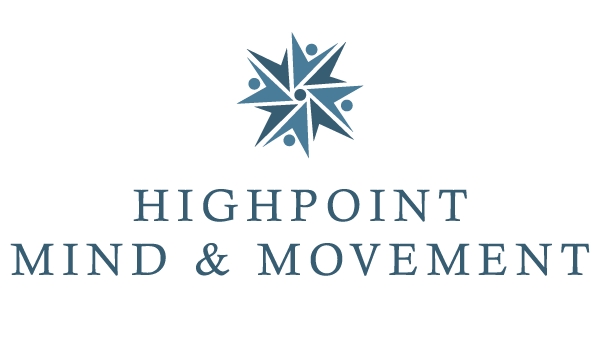
NeuroLinguistic Programming
Change, adapt, or eliminate behaviors through guided mental strategies that shift our thinking and communication patterns.
Since its development in the 1970s, interest in NeuroLinguistic Programming (NLP) has earned recognition as an effective method for learning, achievement, communication, and personal development. The techniques and communication strategies of NLP are easily incorporated into a wide variety of fields and it is currently used in counseling, training, sales, medicine, law, business, performing arts, sports, and education. Therapeutically, it has been used to treat a wide range of issues including depression, anxiety, communication issues, fears and phobias, panic disorders, PTSD, ADHD, addiction, and obsessive-compulsive behaviors.
NeuroLinguistic Programming is a psychological approach that organizes and synthesizes insights gained from studying the words we use, our body language, and our verbal communication. It explores how our personal experiences are imprinted on our neural networks and then how these imprints affect the ways we express ourselves – the words we choose, the way we move, and how we interact with the world. NLP allows us to change, adapt, or eliminate behaviors through guided mental strategies that shift our thinking and communication patterns.
Our reality of the world is subjective, based on our individual experiences and perceptions. This subjectivity is what allows for change – our problems are not fixed in stone!
NLP offers strategies and processes to reframe memories, change habitual thought patterns, and clarify unresolved feelings. Bad experiences will no longer cause you distress, internal chatter and negative self-talk will fade, and you’ll feel better about yourself and your life.
NLP’s life-affirming, ethical values underlie my work and are woven into each session.
NeuroLinguistic Processing Techniques
Below are a few examples of the NLP processes and techniques that are embedded in each session. Click on the title to learn more.
-
Submodalities have a profound impact on how we experience life and are powerful drivers of change. All of the information you receive from your five senses is represented internally in your mind, making up your reality. Submodalities are the fine distinctions from our senses that order our experiences and give them meaning. Essentially they are the building blocks of our thoughts and memories.
If you think of a memory, you may “see” it in your mind (visual submodality), it may have a sound or a voice (auditory submodality), and you may have a feeling or sensation associated with it (kinesthetic submodality).
If we had a bad experience and we “code” it in color, with lots of movement and sound, and the memory is very large, as if it is located right in front of us, then that experience is still very much with us. Learning to change the structure of our experiences with submodalities allows us to change the meaning of an experience. By working at this consistently, we can completely overhaul our life experiences to create a happier, more fulfilling life. -
The Outcome Frame is a series of questions that focuses you on a solution, establishing what you want from our work together, and identifies how you will know when you have achieved your desired results.
The Outcome Frame is used in contrast to the Problem Frame, which focuses on the problem. The Outcome Frame immediately begins generating positive change with focused intention:
• What is it that you want?
• What will having this do for you?
• How will you know when you have it?
• When, where, and with whom do you want this?
• How will it impact others in your life?
• What stops you from having this? -
Sensory acuity is the ability to make accurate observations in order to assess changes that are taking place. Whenever an internal shift occurs, a trained eye will see a visible change in one’s facial expressions, behavior, breathing, skin color, voice tone and tempo, body language, and posture.
As we explore areas that may be new and unfamiliar and your ability to express what you are feeling may be limited, sensory acuity allows me to guide you, anticipating the next step needed to maintain your focus and achieve the best results.
In the classroom, sensory acuity (“noticing” in Brain Gym) allows the teacher to make accurate observations about what students are feeling and to determine which techniques or processes the student would benefit from. Teachers can utilize their observations to optimize classroom learning by thinking about classroom seating arrangements, how the room as a whole is arranged, and how they interact with the students. -
Communication is intrinsic to human beings and we naturally develop the basic skills to function in society. However, misunderstandings are common and relationships can suffer from poor communication.
Effective communication is essential to building positive relationships at home and work. NLP offers a practical set of communication skills that are clearly defined and easily learned to help you accurately convey thoughts and feelings, listen and comprehend, share ideas, and handle conflicts. Conflict resolution strategies are an intricate part of communication skills. You can learn how to diffuse an argument, soften a hurtful situation, or turn a verbal conflict into a productive discussion.
-
NLP Presuppositions
Intrinsic to NeuroLinguistic Programming techniques is the acceptance that NLP’s role is to find solutions, rather than ruminate on the cause, and that NLP encompasses certain life-affirming beliefs and attitudes: the Presuppositions.
-
Reframing Exercise
A person's point-of-view depends on the frame it is viewed through. When the frame is changed, the meaning also changes – allowing you to gain a fresh perspective on just about anything through a positive shift in your thoughts, feelings, and behavior.
-
Parts Integration
We all have conflicting parts of ourselves that can stop us from making decisions or accomplishing something that we want. This effective exercise is designed to integrate those opposing parts, to resolve internal conflicts, and move forward.
-
Outcome Frame Exercise
We often see problems through a lens of limitation. Shifting our focus to see problems merely as a set of choices, we can then organize our thinking around our desires, how to achieve them, and the steps needed to solve the problem.
Discover my newsletter
Receive a quarterly email filled with interesting information on our brain-body function, notice of upcoming classes and workshops, as well as useful resources for learning, stress management, and more.

